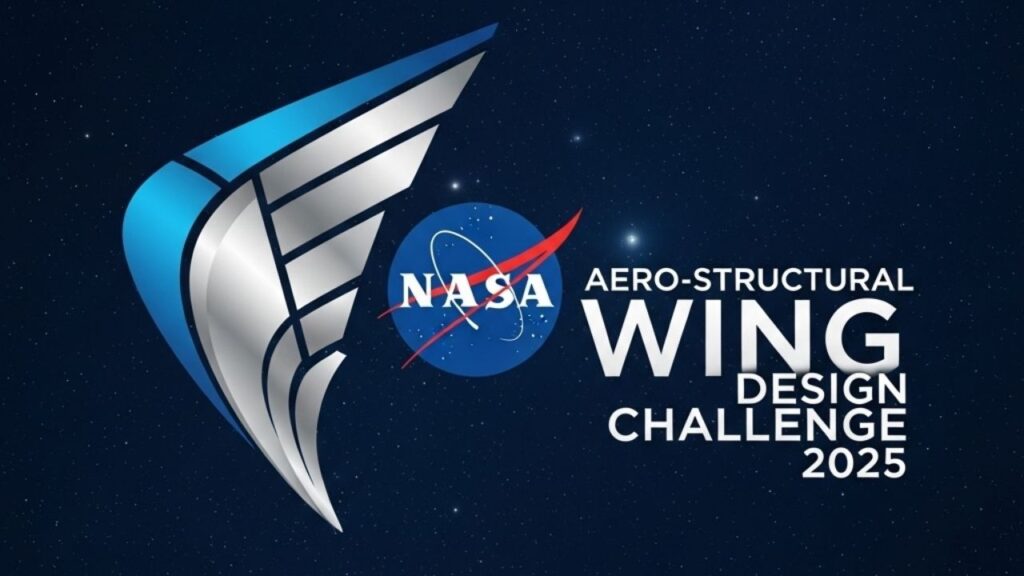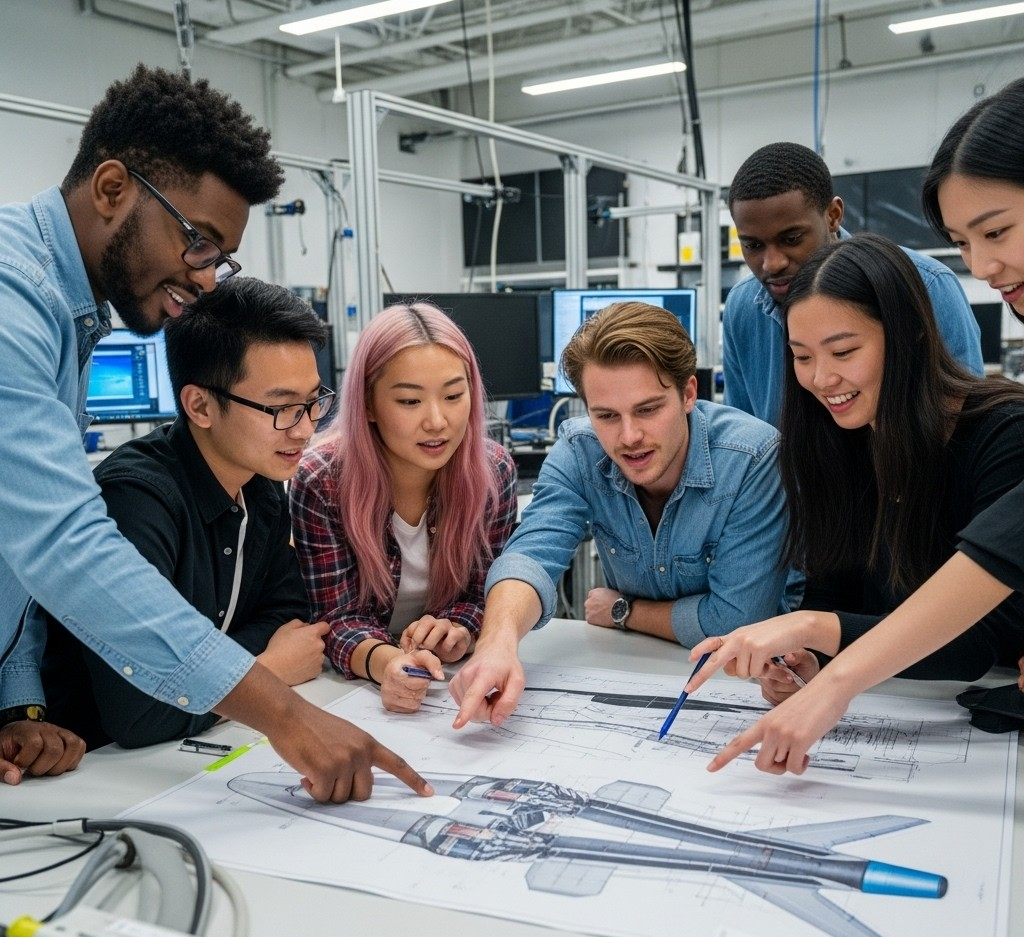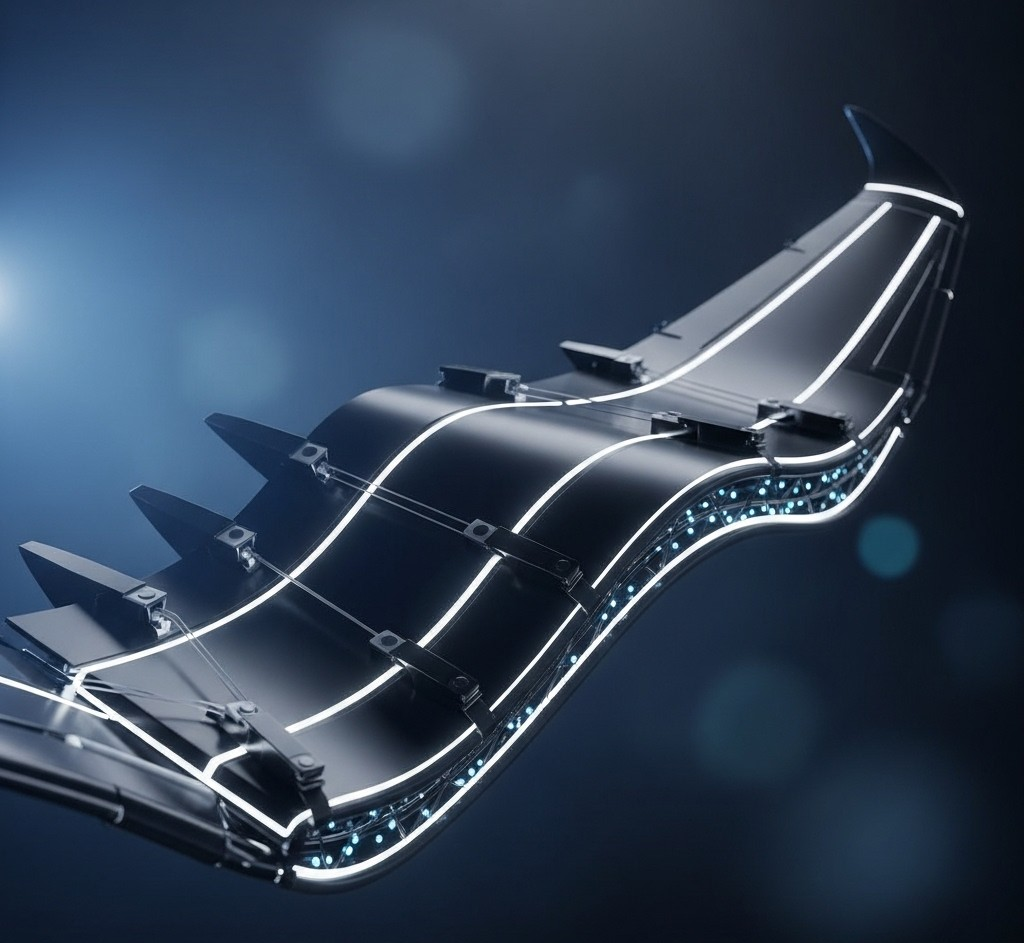The skies are calling! NASA’s Aero-Structural Wing Design Challenge 2025 is live, offering an unparalleled opportunity for budding engineers, scientists, and innovators to leave their mark on the future of flight. This isn’t just a competition; it’s a launchpad for your career, a chance to contribute to cutting-edge aerospace advancements, and an invitation to solve real-world challenges with the guidance of the world’s leading space agency. If you’ve ever dreamed of shaping the aircraft of tomorrow, this is your moment.

In my experience advising students, one common hurdle is simply knowing where to begin with a challenge of this magnitude. The information can seem overwhelming, the technical requirements daunting. But trust me, with the right approach and a clear roadmap, you can not only navigate this process successfully but truly shine. This article is your comprehensive, actionable, and encouraging guide to understanding and excelling in the NASA’s Aero-Structural Wing Design Challenge 2025.
What is NASA’s Aero-Structural Wing Design Challenge 2025?
At its core, the NASA’s Aero-Structural Wing Design Challenge 2025 is an invitation to innovate. NASA is constantly pushing the boundaries of aeronautics, and a key area of focus is aero-structural design optimization. This involves creating wing designs that are not only aerodynamically efficient but also structurally sound and lightweight. The challenge, often part of broader capstone projects or senior design programs, tasks university students with developing novel wing concepts that can lead to more fuel-efficient, quieter, and sustainable aircraft.
Key Aspects of Aero-Structural Design
Aero-structural design is a fascinating blend of disciplines. It’s where the art of aerodynamics meets the science of materials and mechanics. Here’s what it typically involves:
- Aerodynamic Efficiency: Maximizing lift while minimizing drag. This often means exploring high-aspect ratio wings (long and slender), advanced airfoils, and innovative wingtip devices.
- Structural Integrity: Ensuring the wing can withstand the immense forces it will experience during flight, including lift, drag, thrust, and gravity. This requires careful material selection and structural layouts.
- Lightweighting: Reducing the overall weight of the wing without compromising strength or performance. This is crucial for fuel efficiency and payload capacity. Advanced composites like carbon fiber-reinforced polymer (CFRP) are playing a significant role in this area .Eagle Pubs.
- Manufacturing Feasibility: Considering how the wing can actually be built. This includes manufacturing processes, assembly techniques, and cost-effectiveness.
Why Participate? The Rewards Are More Than Just Bragging Rights
Participating in the NASA’s Aero-Structural Wing Design Challenge 2025 offers a multitude of benefits that extend far beyond a winning title:
- Real-World Experience: This isn’t a theoretical exercise. You’ll be tackling challenges that directly impact the future of aviation, giving you invaluable practical experience.
- Networking Opportunities: Connect with NASA experts, industry professionals, and like-minded students from around the globe. These connections can be pivotal for future internships and career paths.
- Skill Development: Hone your skills in CAD, FEA (Finite Element Analysis), CFD (Computational Fluid Dynamics), project management, teamwork, and technical communication.
- Visibility: A strong performance can put you on NASA’s radar for internships. NASA offers numerous internship opportunities, and participation in their challenges can certainly open doors NASA Aeronautics Monthly STEM Newsletter, July 2025.
- Contribution to a Better Future: Your design could contribute to aircraft that are more environmentally friendly, helping to shape a sustainable future for air travel.

Navigating the Challenge: Your Step-by-Step Action Plan
Successfully tackling the NASA’s Aero-Structural Wing Design Challenge 2025 requires a structured approach, meticulous planning, and a good dose of perseverance.
1. Understand the Specifics of the 2025 Challenge
While the core topic remains aero-structural wing design, each year’s challenge often has specific focus areas or mission profiles. The official NASA STEM Gateway portal is your go-to source for the most up-to-date information, including the detailed problem statement, submission guidelines, and deadlines. For the 2025 challenge, key topics may include “Optimization of Excitations for System Identification,” “Wind Tunnel Demand Forecast Model,” and “Aero-structural Wing Design Optimization” among others NASA STEM Gateway. Pay close attention to these details – they will define your project’s scope.
2. Assemble Your Dream Team (If Applicable)
Most NASA challenges encourage, or even require, team participation. A multidisciplinary team is a huge asset. Think about:
- Aerospace Engineers: For core aerodynamic and structural design.2
- Mechanical Engineers: For material science, manufacturing, and structural analysis.
- Computer Scientists/Software Engineers: For computational modeling, simulations, and data analysis.
- Technical Writers/Communicators: To articulate your design clearly and concisely in reports and presentations.
3. Dive Deep into Research
This is where your expertise truly comes into play. Explore existing literature, NASA’s own research papers, and industry advancements in wing design. Look into:
- Novel Wing Concepts: Blended wing bodies, truss-braced wings, and adaptive wings.
- Advanced Materials: Composites, smart materials, and lightweight alloys.3
- Computational Tools: Learn about and utilize software for CFD, FEA, and multi-disciplinary design optimization (MDO).
- Sustainability Aspects: How can your design reduce fuel consumption and emissions?
4. Ideation and Conceptual Design
This is the creative phase. Brainstorm multiple concepts, no idea is too wild at this stage. Sketch, whiteboard, and discuss. Consider:
- What problem is your design trying to solve?
- What are its unique features?
- How does it address the challenge’s specific requirements?
5. Design, Analyze, Refine
This is the iterative heart of the challenge. Use your chosen computational tools to model your wing design. Run simulations to analyze its aerodynamic performance, structural integrity under various load cases, and weight.
- Aerodynamic Analysis: Use CFD software to simulate airflow, calculate lift and drag, and identify areas for improvement.
- Structural Analysis: Employ FEA to understand stress distribution, deformation, and potential failure points. This helps you optimize material thickness and structural members.
- Optimization: This is where you refine your design to meet conflicting requirements – a lighter wing might be less stiff, a more aerodynamic shape might be harder to manufacture. This iterative process of analysis and refinement is crucial.

6. Document Everything
Thorough documentation is not just a formality; it’s a critical part of the engineering process and a key component of your submission. Keep detailed records of:
- Your design iterations and the rationale behind each change.
- The simulation results and their interpretation.
- Any assumptions made.
- The data you collected and how it was analyzed.
This demonstrates the rigor of your approach and provides strong evidence for your design choices.
7. Prepare Your Submission
Follow NASA’s submission guidelines to the letter. This typically includes:
- Technical Report: A comprehensive document detailing your research, design process, analysis, results, and conclusions.
- CAD Models/Drawings: Visual representations of your design.
- Presentations: Often, a summary presentation is required.
Gaining an Edge: Tips from an Expert
- Embrace Interdisciplinary Collaboration: Modern aerospace challenges are rarely solved by a single discipline. Encourage genuine collaboration and learning from each other’s expertise.
- Focus on the “Why”: Beyond the technical details, articulate why your design matters. What problems does it solve? What impact could it have on the future of aviation?
- Simplicity and Clarity: While the technical concepts are complex, your communication should be clear, concise, and accessible. Avoid unnecessary jargon, or explain it thoroughly if essential.
- Attention to Detail: Small errors in calculations or presentation can undermine an otherwise brilliant design. Double-check everything.
- Iterate, Iterate, Iterate: Aerospace design is an iterative process. Don’t be afraid to go back to the drawing board if your initial analyses reveal weaknesses. The best designs are refined through many cycles.
Beyond the Design: The Broader Impact
The skills you develop and the knowledge you gain from participating in the NASA’s Aero-Structural Wing Design Challenge 2025 are transferable to a wide array of engineering and scientific fields. The ability to innovate, analyze complex systems, work in teams, and communicate effectively are highly sought-after qualities in today’s dynamic professional landscape.
FAQ
Q1: What kind of software tools are essential for this challenge?
For the NASA’s Aero-Structural Wing Design Challenge 2025, essential software tools typically include Computer-Aided Design (CAD) software like SolidWorks or CATIA for creating 3D models, Finite Element Analysis (FEA) software like ANSYS or Abaqus for structural analysis, and Computational Fluid Dynamics (CFD) software like Fluent or OpenFOAM for aerodynamic simulations. Familiarity with programming languages like Python for scripting and data analysis can also be highly beneficial.
Q2: How can I find teammates for the NASA’s Aero-Structural Wing Design Challenge 2025 if my university doesn’t have a formal program?
If your university doesn’t have a dedicated program, you can still find teammates! Reach out to professors in aerospace, mechanical, and computer science departments. Look for student clubs related to engineering, aviation, or robotics. Online forums, LinkedIn groups, and even NASA’s own STEM Gateway communities can be excellent places to connect with like-minded students eager to participate in the NASA’s Aero-Structural Wing Design Challenge 2025.
Q3: What is the typical timeframe for the NASA’s Aero-Structural Wing Design Challenge 2025?
While specific dates vary by challenge and year, the “Engagement Opening: Aero-structural Wing Design Optimization” for capstone projects had a registration end date of June 27, 2025.These challenges often span several months, allowing ample time for research, design, analysis, and report preparation. Always refer to the official NASA challenge page for precise deadlines.






